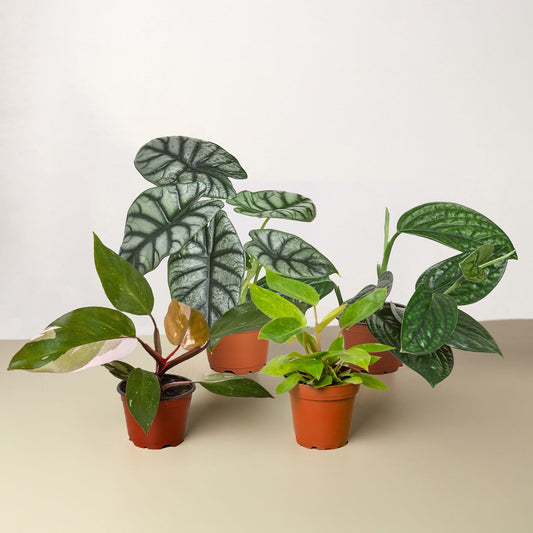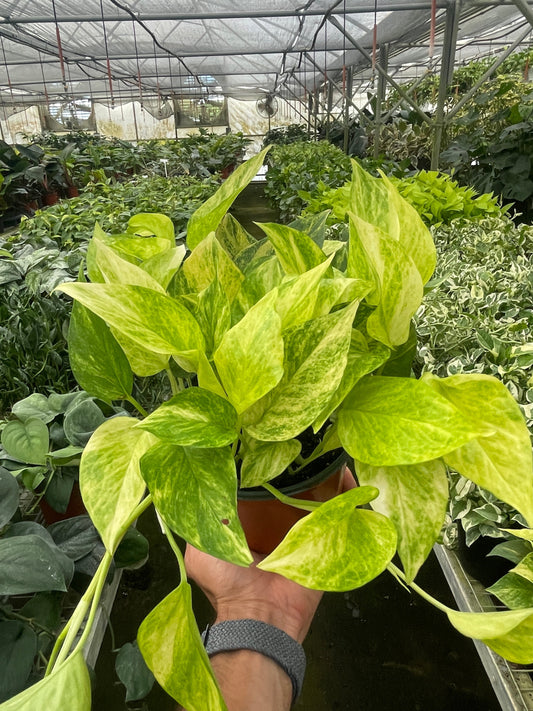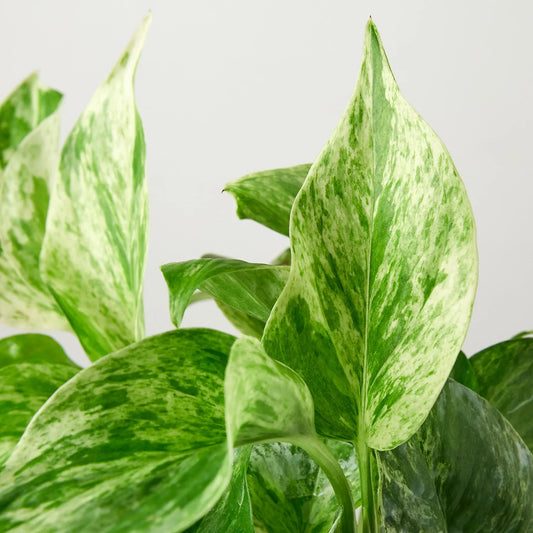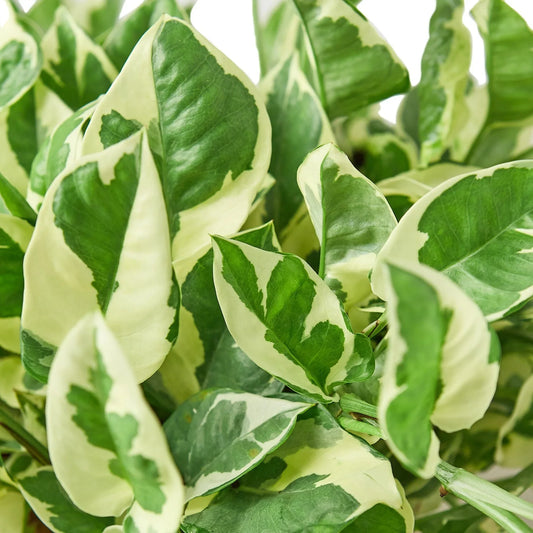What's the Best Fertilizer For Bamboo Palms?
Cafe Planta Team
Picture yourself on a peaceful Sunday afternoon, tinkering with your indoor garden. You're surrounded by your beloved plants, and there's one that stands out—your bamboo palm. It's gracefully arching, adding a touch of the tropics to your home. But to keep it thriving, you need to feed it right. So, what's the best fertilizer for bamboo palms?
In this article, we'll walk through the essentials of choosing the perfect fertilizer for your bamboo palm. We'll explore how often to fertilize, what types of nutrients these palms crave, and how to apply fertilizer correctly. By the end, you'll have a clear understanding of how to keep your bamboo palm healthy and vibrant.
Understanding Bamboo Palms
Bamboo palms, or Chamaedorea seifrizii, are popular houseplants known for their elegant, feathery foliage. Native to the rainforests of Central America, these palms bring a touch of the tropics indoors. They're relatively easy to care for, making them a favorite among plant lovers. But just like any living thing, they need the right nutrients to thrive.
While bamboo palms aren't particularly fussy, they do have specific requirements when it comes to feeding. These palms prefer a balanced diet, similar to how a balanced meal keeps us healthy. Without proper nutrition, they might show signs of distress, such as yellowing leaves or stunted growth. Understanding what your bamboo palm needs is the first step in providing the best care.
Interestingly enough, bamboo palms prefer indirect light and thrive in average indoor temperatures. They can tolerate low light conditions, but you'll see the best growth in bright, indirect light. As for humidity, they appreciate a bit more moisture, so consider misting them occasionally or placing a humidifier nearby.
The Importance of Fertilizing Bamboo Palms
So why is fertilizing important? Well, think of fertilizer as a multivitamin for your plants. It supplements the nutrients that might be missing from the soil, especially in a pot where resources are limited. For bamboo palms, a good fertilizer can encourage lush growth and a vibrant green color.
Bamboo palms, like most houseplants, rely on a steady supply of essential nutrients to grow. These include macronutrients like nitrogen, phosphorus, and potassium, as well as micronutrients like iron, magnesium, and manganese. Each of these plays a crucial role in plant health. For instance, nitrogen is vital for leaf growth, while phosphorus supports root development and flower production.
Without regular feeding, bamboo palms might not reach their full potential. You'll notice slower growth and less vibrant foliage. Fertilizing also helps them resist stress from environmental changes or pest infestations. In short, a well-fed bamboo palm is a happy palm!
Choosing the Right Fertilizer
When it comes to selecting a fertilizer, it can feel like you're shopping for cereal in a grocery store aisle—so many choices! For bamboo palms, you'll want to opt for a balanced, water-soluble fertilizer. This means it should have equal parts of nitrogen, phosphorus, and potassium, often labeled as N-P-K on the package.
- Balanced Fertilizer: Look for a 10-10-10 or 20-20-20 formulation. These numbers represent the percentage of each nutrient.
- Slow-Release Fertilizer: If you're someone who prefers a hands-off approach, consider a slow-release fertilizer. These gradually release nutrients over time, reducing the need for frequent applications.
- Organic Options: If you're leaning towards organic gardening, there are plenty of natural options. Organic fertilizers, like fish emulsion or seaweed extract, can be great alternatives.
While it's tempting to go for the strongest fertilizer, remember that more is not always better. Over-fertilizing can be harmful, leading to salt buildup in the soil, which can damage the roots. It's better to under-fertilize than to overdo it, as you can always add more later.
When and How Often to Fertilize
Timing is everything, especially when it comes to fertilizing your bamboo palm. Generally, the best time to fertilize is during the growing season—spring and summer. This is when the plant is actively growing and can make the most of the added nutrients. Feeding during the dormant months of fall and winter isn't necessary and can even harm the plant.
As for how often, a good rule of thumb is to fertilize every 4-6 weeks during the growing season. However, this can vary depending on the type of fertilizer you're using. For instance, a slow-release fertilizer might only need reapplication every few months.
Applying fertilizer is straightforward. Dissolve the recommended amount in water and pour it evenly around the base of the plant. Make sure the soil is moist before applying, as fertilizing dry soil can burn the roots. If you're using a slow-release fertilizer, sprinkle it evenly over the soil surface and water it in.
Signs Your Bamboo Palm Needs Fertilizer
How do you know if your bamboo palm needs a nutrient boost? Here are a few signs to watch out for:
- Yellowing Leaves: This can indicate a nitrogen deficiency. While some yellowing of older leaves is normal, widespread yellowing is a red flag.
- Stunted Growth: If your palm isn't growing like it used to, it might be lacking essential nutrients.
- Pale or Weak Foliage: Leaves that are light in color or weak may need a boost of magnesium or iron.
Addressing these issues with the right fertilizer can help get your bamboo palm back on track. However, if the problem persists, it might be worth checking for other issues like pests or root problems.
Avoiding Common Fertilizer Mistakes
Even with the best intentions, it's easy to make mistakes when fertilizing. Here are some common pitfalls and how to avoid them:
- Over-Fertilizing: Remember, more isn't always better. Excess fertilizer can burn the roots and cause more harm than good.
- Using the Wrong Type: Not all fertilizers are created equal. Make sure to select a balanced fertilizer suited for bamboo palms.
- Fertilizing at the Wrong Time: Stick to the growing season. Fertilizing during the dormant months can stress the plant.
- Ignoring the Instructions: Always follow the package instructions for the correct dosage and application method.
By being mindful of these mistakes, you can ensure your bamboo palm gets the right care and attention it needs.
Supplementing Fertilizer with Good Care Practices
Fertilizer is just one piece of the puzzle. To keep your bamboo palm in top shape, combine feeding with good care practices. This includes proper watering, lighting, and general maintenance.
Bamboo palms prefer consistently moist soil, but not soggy. Overwatering can lead to root rot, so let the top inch of soil dry out between waterings. As for lighting, place your palm in bright, indirect light. Direct sunlight can scorch the leaves, while too little light can slow growth.
Regular maintenance also involves cleaning the leaves to remove dust, which can block sunlight and reduce photosynthesis. Occasionally check for pests, and prune any dead or damaged leaves to encourage healthy growth.
Creating a Bamboo Palm Care Routine
Developing a care routine can help you stay on top of your bamboo palm's needs. Consider creating a simple schedule that includes:
- Watering: Check the soil moisture weekly and water as needed.
- Fertilizing: Mark your calendar for fertilizing every 4-6 weeks during the growing season.
- Cleaning and Pruning: Dust the leaves and prune as necessary, perhaps monthly or as needed.
- Pest Checks: Inspect your plant for pests regularly, especially if it's outdoors during the warmer months.
With a consistent routine, you'll be better equipped to notice changes or issues with your bamboo palm early on, allowing for quicker interventions.
Final Thoughts
Fertilizing your bamboo palm correctly is a vital aspect of its care, contributing to healthy, vibrant growth. By selecting the right fertilizer, applying it at the appropriate times, and combining it with good care practices, you can ensure your bamboo palm remains a stunning feature in your home.
At Cafe Planta, we believe in the power of plants to transform spaces and bring joy. Whether you're a seasoned plant parent or just starting your journey, we're here to support you with our range of houseplants and accessories. If you have any questions about plant care, feel free to email us, or reach out on our Instagram. Let’s grow beautiful, thriving spaces together!



















